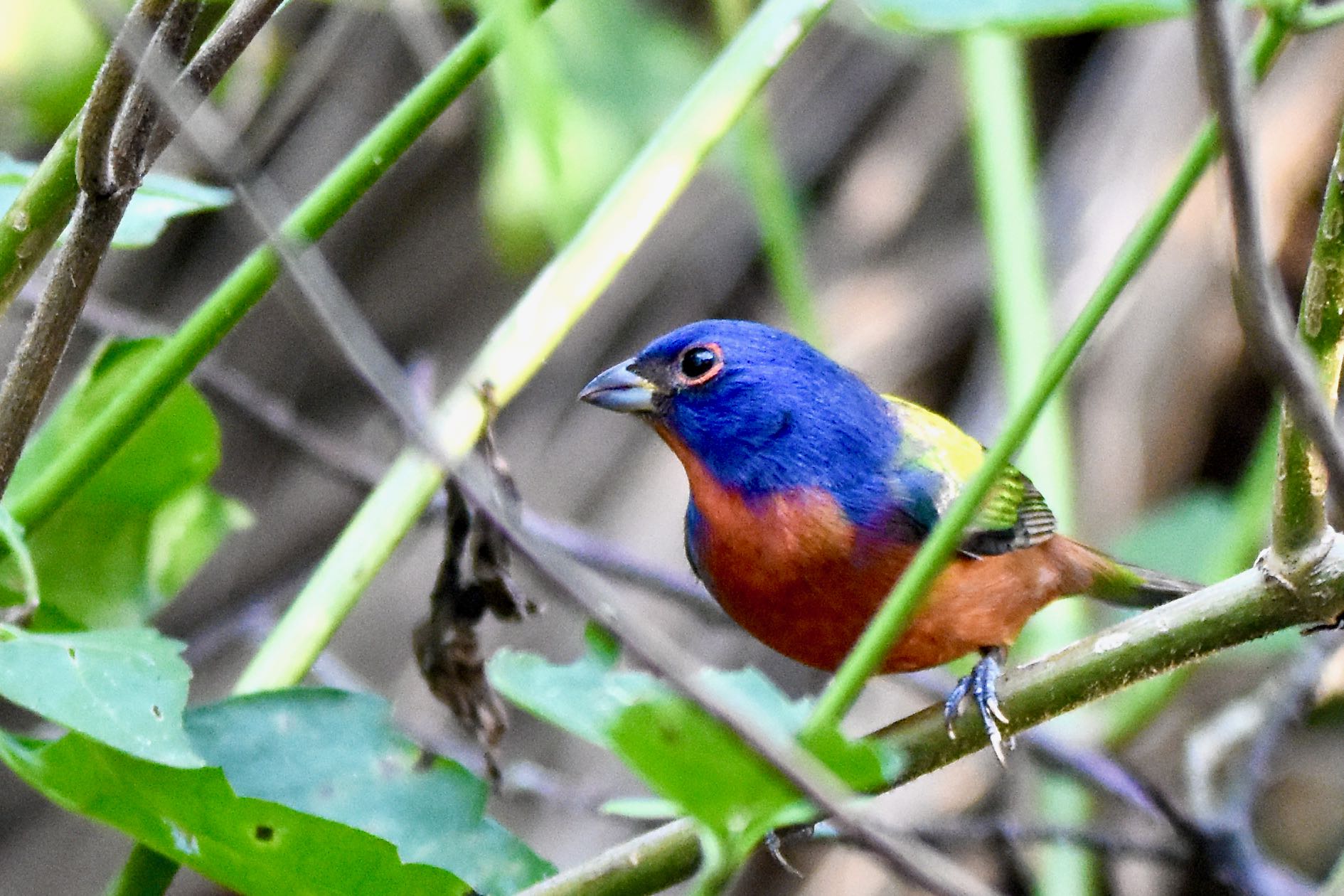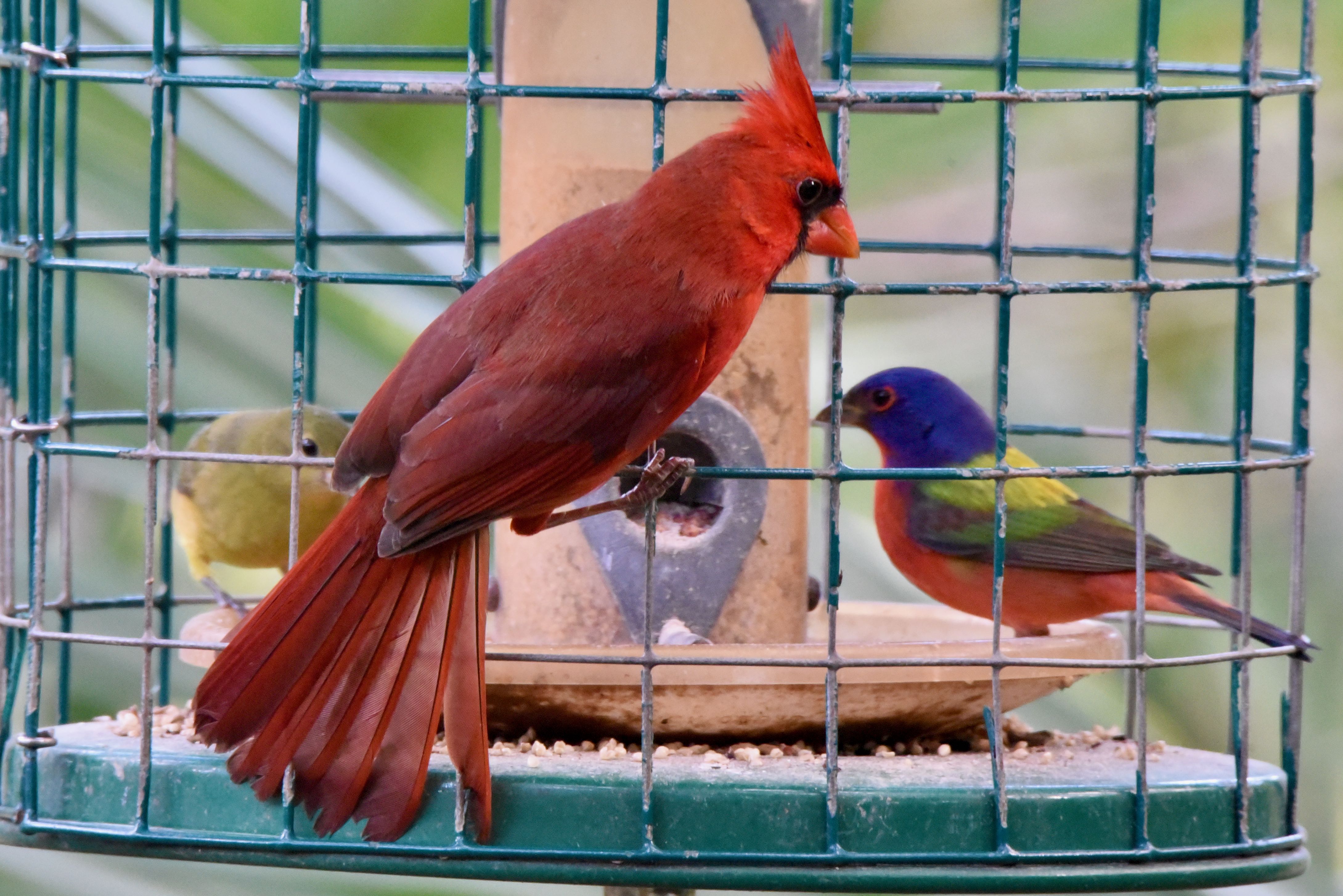
Painted bunting, photographed at Green Cay Nature Center, Boynton Beach, Palm Beach County, in February 2016.
With its blues, reds, oranges, yellows and greens, the painted bunting, Passerina ciris, is virtually a feathered rainbow. There really is no other North American bird like it. You almost have to see it to believe that a bird can be this brilliantly plumed.
And despite some seriously declining numbers and a preference for dense foliage, it's still fairly easy to spot painted buntings here in South Florida if you know where and when to look for them.
There are actually two populations of painted buntings in the United States. Western buntings spend their summers in the south-central part of the country, including extreme northwestern Florida, and winter in Mexico. Eastern buntings summer along the Atlantic Coast between North Carolina and Titusville and travel to South Florida and the Caribbean to keep warm during the cold months. So we see them from fall into spring.
Painted buntings are finches, tiny birds that top out at about 5 inches long. Males are the gaudy ones; females are green and yellow green, drab only in contrast with the guys. Juveniles lack any sort of color, however. Buntings are mainly ground foragers, eat mainly seeds — their short, stout beak is perfect for cracking them open — but during breeding season, they will down a bug or two. They live in areas with low, dense vegetation, so spotting them can be difficult despite their bright plumage.
However, they do frequent feeders, like the ones spotted around Green Cay Nature Center in Boynton Beach, where these photographs were taken.
During breeding season, males become extremely territorial, and will fight to keep other males out of their space, even to the point of inflicting serious injury or death. During the rest of the year, not so much. It's common to see numerous males and females gathering at the same feeder in winter.
Painted buntings are generally monogamous; a mating pair can have as many as three broods during a season. A clutch of three or four eggs takes less than two weeks to hatch, and fledge about 10 days later. Only females handle incubation duties, but males may become the sole caretaker as mom heads off to start another family.
Painted buntings are not listed by any government agency as either endangered or threatened, but the International Union for Conservation of Nature considers it "near threatened" through loss of habitat and capture for the pet trade. It's estimated that the population has decline 4.5 percent on average annually since 1966.
Painted buntings are members of Cardinalidae, the cardinal family.
Green Cay Nature Center


